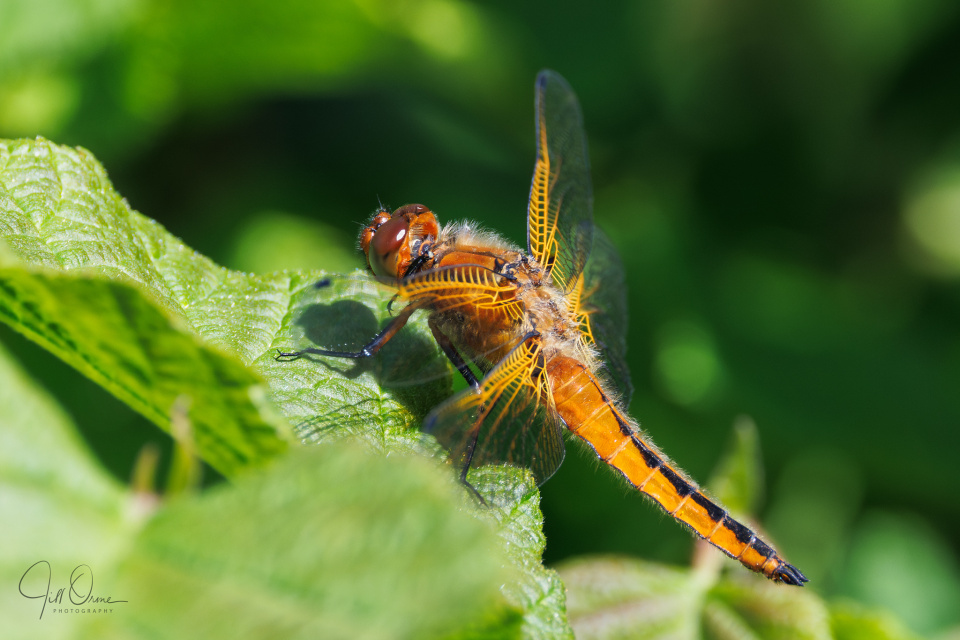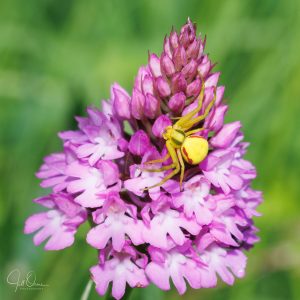Wait – what? Blue, you say? But… he’s red…?
Well, yes, at the moment he’s red – or reddish, at any rate. But as he matures his thorax will darken through brown to black, his abdomen will acquire a coating of powdery blue pruinescence, his frons will turn black, and his eyes will go sky blue. If you take a look at the male in this image and the semi-mature specimen here, you’ll perhaps see why the European common name for this species is the Blue Chaser – though the grumpy old feminist in me would like to point out that there’s a patriarchal slant to this, because the females never turn blue.
Just don’t get me started on Norfolk Hawkers.
Anyway, we call this the Scarce Chaser, because it once was in this country, though in the past twenty years its range has expanded dramatically, and these days it’s reasonably common in the Shire. It’s primarily a riverine species, so I wouldn’t have thought to go looking for them at Cleeve Prior Community Orchard, but the River Avon runs along the bottom of the cliff that gives Cleeve Prior its name and is probably less than half a kilometre from the spot where I took this photo, so it’s really no surprise that they’re here – the orchard will be a good place for them to feed up and complete their maturation, before returning to the river to breed.
By the way, the binomial name for this species is Libellula fulva. ‘Libellula’ is the Italian word for dragonfly, and ‘fulva’ means tawny. ‘Tawny dragonfly’ covers the situation pretty well, I think.
Before I forget, tonight’s second image shows a pretty impressive crab spider I also found in the Community Orchard, on one of the hundreds of pyramidal orchids that are currently blooming among the trees. Misumena vatia can change colour, within reason, to blend in with the colour scheme of the flower on which it’s lurking, and make it easier for it to ambush prey. I’d suggest that this one has recently moved from something yellow, and hasn’t yet had the time to sort herself out.
R: C2, D10.








